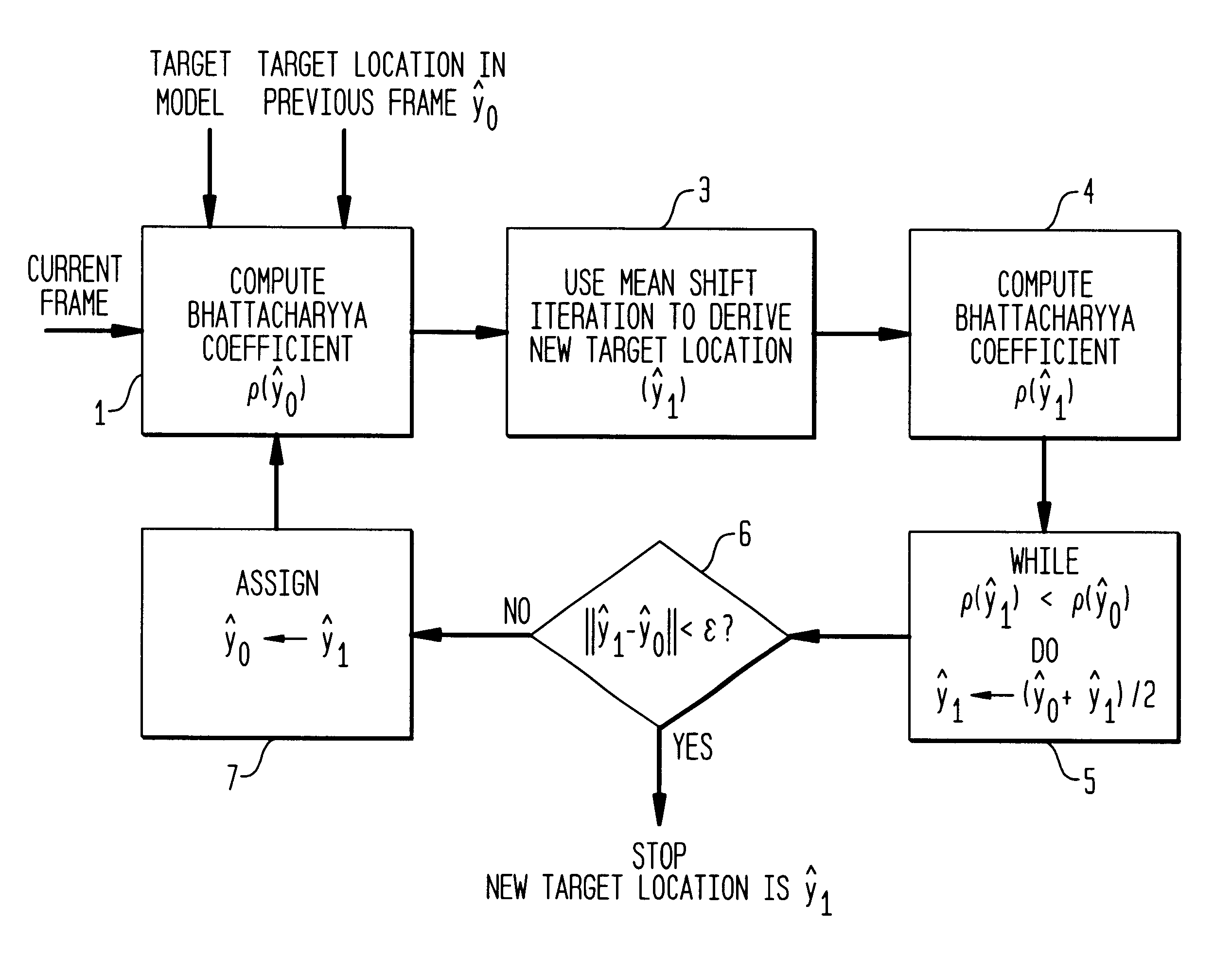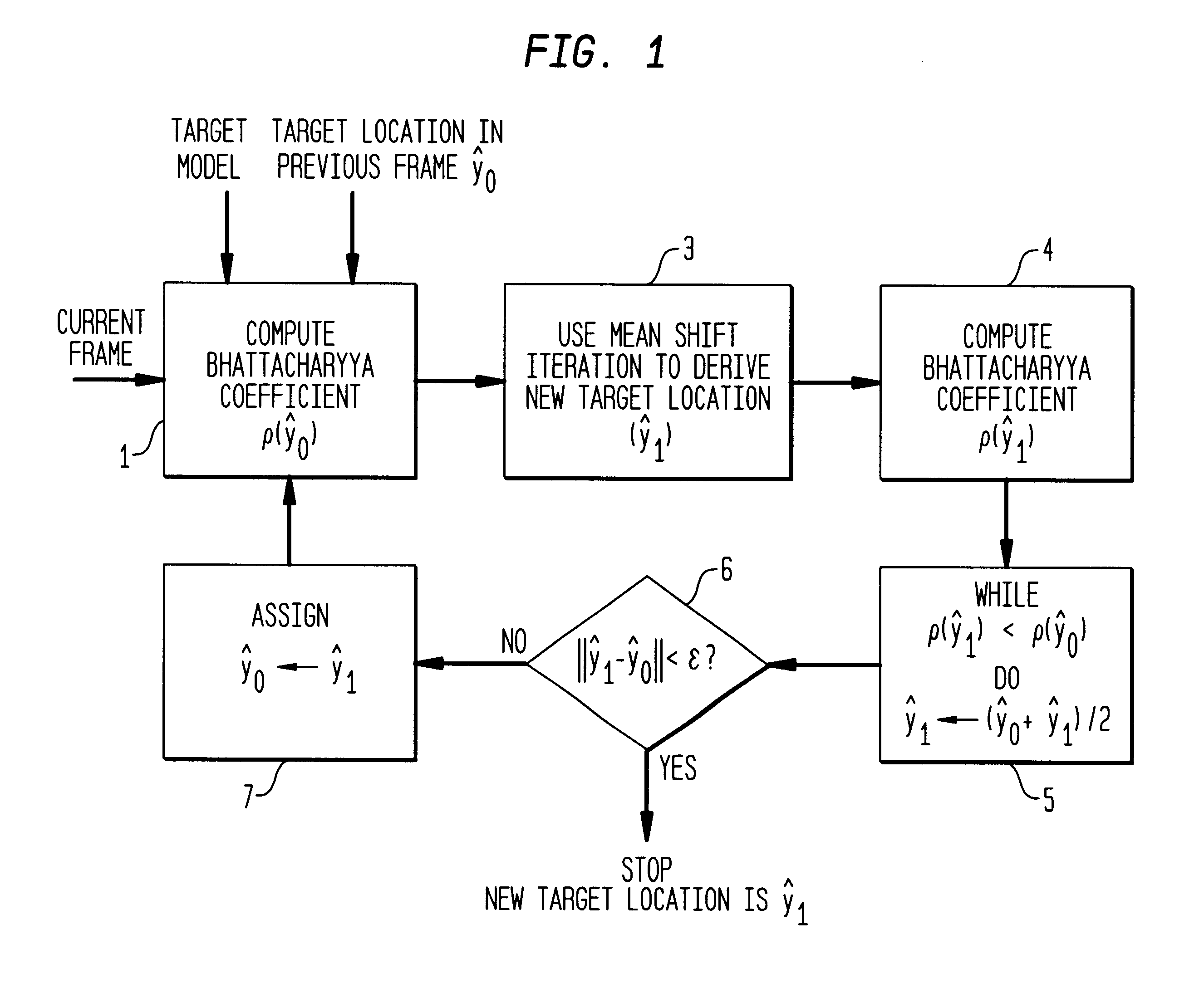Real-time tracking of non-rigid objects using mean shift
a technology of non-rigid objects and mean shift, applied in the field of real-time tracking of non-rigid objects using mean shift, can solve the problem that the computation complexity of the tracker is critical for most applications
- Summary
- Abstract
- Description
- Claims
- Application Information
AI Technical Summary
Problems solved by technology
Method used
Image
Examples
Embodiment Construction
The description is organized as follows.
Section 1 presents and extends the mean shift property for use to find the location of a candidate target,
Section 2 introduces a similarity metric derived from the Bhattacharyya coefficient,
Section 3 develops and analyzes the tracking method of the invention,
Section 4 provides the result of experiments and comparisons, and Section 5 provides discussion.
1. Mean Shift Analysis
Here we define the sample mean shift, introduce the iterative mean shift procedure, and present a new theorem showing the convergence for kernels with convex and monotonic profiles.
Sample Mean Shift
Given a set {x.sub.i }.sub.i=1 . . . n of n points in the d-dimensional space R.sup.d, the multivariate kernel density estimate with kernel K(x) and window radius (bandwidth) h, computed in the point x is given by ##EQU1##
The minimization of the average global error between the estimate and the true density yields the multivariate Epanechnikov kernel (described at page 139 of D. ...
PUM
 Login to View More
Login to View More Abstract
Description
Claims
Application Information
 Login to View More
Login to View More - R&D
- Intellectual Property
- Life Sciences
- Materials
- Tech Scout
- Unparalleled Data Quality
- Higher Quality Content
- 60% Fewer Hallucinations
Browse by: Latest US Patents, China's latest patents, Technical Efficacy Thesaurus, Application Domain, Technology Topic, Popular Technical Reports.
© 2025 PatSnap. All rights reserved.Legal|Privacy policy|Modern Slavery Act Transparency Statement|Sitemap|About US| Contact US: help@patsnap.com


